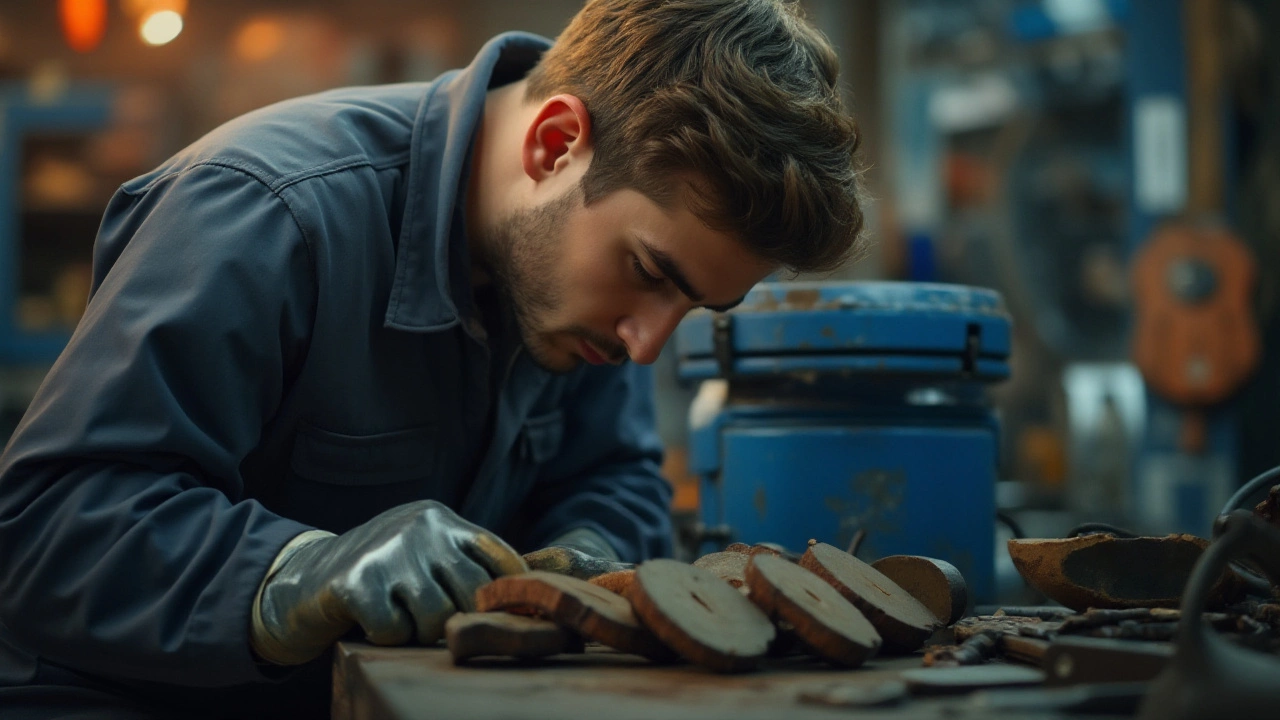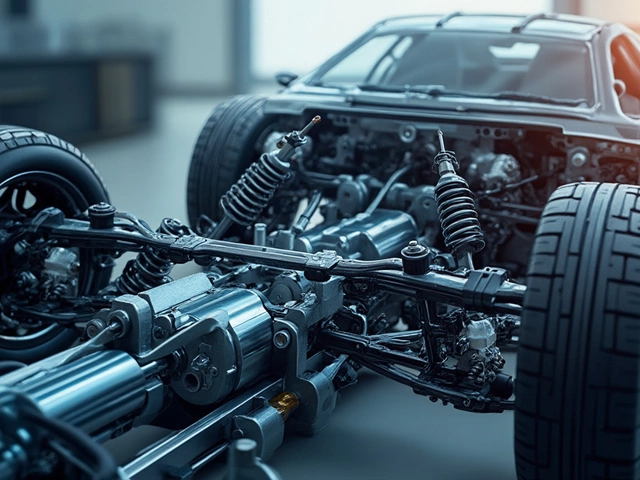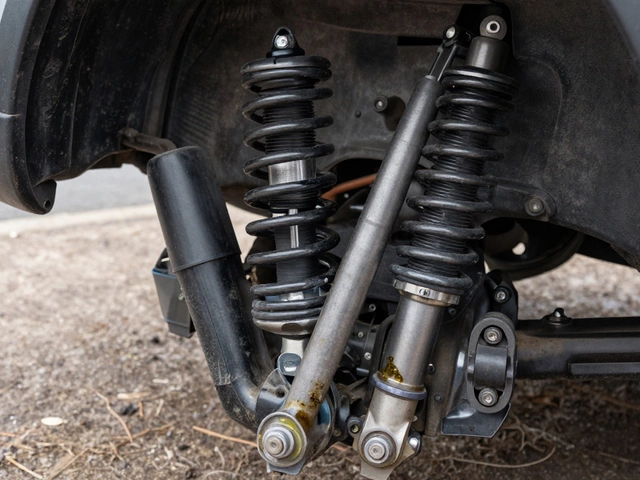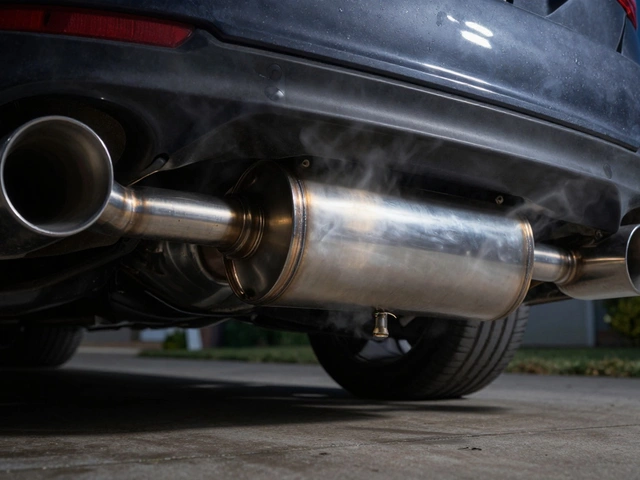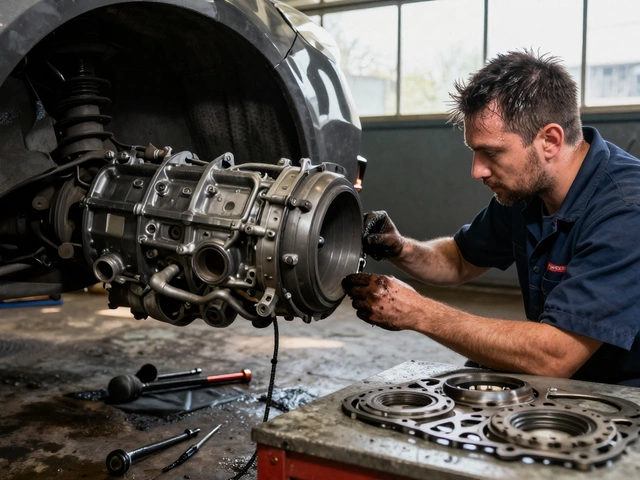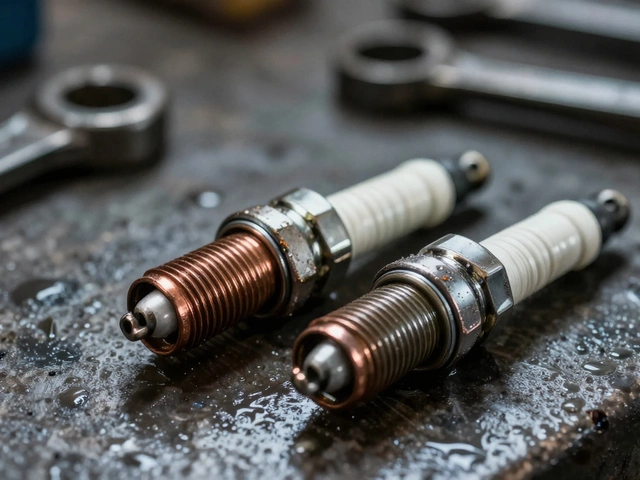One of the unsung heroes of automotive safety, brake pads play a vital role in ensuring every drive is a secure one. Recognizing when they're past their prime can spell the difference between a minor tune-up and a major repair.
The notion of something going wrong with the brakes chills drivers to the bone, and rightfully so. Sounds, sensations, and behaviors help tell the story of what your brake pads are undergoing. Understanding these can help dodge danger effectively.
In this article, we’ll navigate through what makes brake pads so critical, common signs they're giving out, and practical suggestions to keep your car’s braking system in top shape. Stay informed so you can keep your vehicle roadworthy.
- The Role of Brake Pads
- Common Symptoms of Worn Brake Pads
- Unexpected Noises and Vibrations
- Visual Inspection Techniques
- Maintenance Tips and When to Replace
The Role of Brake Pads
Behind every safe stop lies a deceptively simple yet crucial component: the brake pad. These unsung heroes of the vehicle's braking system take on the hefty responsibility of transforming kinetic energy into thermal energy through friction. Located snugly within the brake caliper, these pads press against the brake rotor whenever you apply the brakes, creating the necessary friction to decelerate and eventually halt the car's momentum. It’s remarkable to consider how this straightforward mechanical interaction bears the weight of safety in every journey.
Modern brake pads are typically crafted from materials like ceramic, metallic, and organic composites. Each type offers a unique blend of performance characteristics, cost-effectiveness, and environmental considerations. Ceramic pads, for instance, are favored for their quiet operation and longevity, though they come at a higher price point. This complexity of material science speaks to the intricate dance between safety, cost, and performance in automotive design. By understanding the role of brake pads, car enthusiasts and everyday drivers alike can better appreciate how integral these small components are to vehicle operation and, crucially, occupant safety.
The process of choosing the right brake pad isn't merely a matter of selecting materials but also considering the driving conditions and habits. For instance, someone often driving through urban environments with frequent stop-and-go traffic might prioritize pads that offer high initial bite and consistent performance under various temperatures. By contrast, those spending more time on highways might favor pads with greater heat dissipation capabilities to maintain performance during long-distance travel. This variation underscores the diversity of thought and engineering that goes into these seemingly simple components.
"Brake pads are fundamentally about control and safety. Every time a driver presses that pedal, they're trusting this crucial system to keep them and others safe," said Peter Jones, an automotive safety expert.
Performance isn't the sole criterion for assessing brake pads. As environmental regulations tighten and awareness increases, more attention is given to the ecological impact of brake materials. Traditional metallic pads, while effective, may produce harmful dust that can degrade air and soil quality over time. This has spurred innovation, leading to the development of eco-friendly alternatives that aim to balance performance with sustainability. This eco-conscious approach ensures that as we move forward, brake pads evolve to meet both safety and environmental standards.
Common Symptoms of Worn Brake Pads
When it comes to the journey of maintaining vehicle health, understanding the signs of brake pads that need replacement is fundamental. Every time you push the brake pedal, there's a flurry of mechanical motion occurring, designed to stop a heavy, fast-moving object with precision. Brake pads gradually wear down, leaving subtle clues of their dwindling effectiveness. Recognizing these signs early not only helps you avoid mishaps but also saves on costly repairs. At the top of the symptom list is a screeching or squealing noise whenever you apply the brakes. This sound typically emerges from a built-in wear indicator, a clever feature that lets you know it's time to consider new pads before any real damage takes root.
Another tell-tale sign of failing brake pads involves the tactile experience at the pedal. An odd vibration or pulsation during braking could point to a problem. This scenario often indicates that the pads are unevenly worn or that the rotor has become warped—neither of which should be ignored. In some cases, reduced stopping power might be yet another indicator. If it takes more distance than usual to come to a complete stop, your brake pads might be too thin to perform their duty effectively, putting safety at risk. It's an intuitive understanding of your vehicle that can genuinely guide you. Not to forget, there's sometimes a handy alert that illuminates on your dashboard signal system, a modern-day Morse code reminding you to check those pads.
"A sudden loss of braking efficiency could suggest worn brake pads, a factor equally crucial to highway safety as seat belts." — Automotive Safety Authority
Visual inspection isn't a task reserved solely for mechanics. You can do it too; just ensure safety precautions are followed. If you're comfortable and equipped with a flashlight, peeking between the spokes of your wheels at the brake pads themselves can reveal their condition. An ideal pad should be over a quarter of an inch thick. If it's thinner, it might be time to swap them out. Alongside these indicators, never overlook any strange burning smells when driving accompanied by frequent brake use—this often signals that the pads are overheating due to overuse or they're excessively worn out.
For those who prefer concrete data, studies have shown that approximately 60% of braking power comes from the front wheels, which typically causes the front pads to wear out faster. This statistic demonstrates why regular inspections and mindful attention to symptom developments are central to proactive car maintenance. Maintaining your vehicle's health isn't just about performance; it's about safety for you and all road users. And so, never dismiss these signs—you owe it to your car and to yourself to ensure everything runs smoothly.

Unexpected Noises and Vibrations
Picture the serene drive home from a long day at work. The gentle hum of your car is suddenly interrupted by a high-pitched screech every time you apply the brakes. Such unexpected noises are often a clear warning sign that your brake pads might be sending distress signals. One of the most common noises, the squeal or screech, can often be attributed to a metal indicator embedded in the pad itself. This piece of engineering genius makes contact with the rotor when pads are due for replacement, alerting you. Yet, a squeal isn't always the harbinger of disaster; sometimes, it could be the result of debris like stones caught between the pad and rotor. Regular investigation is key.
Where there is noise, vibration often follows as its unsya partner. That pulsation you feel under your foot when braking is not just a quirky car feature but could be a sign of uneven wear or warped rotors. This vibration is more than just a comfort issue; it can significantly impact the vehicle's stopping capability. If ignored, it can lead to greater expenses down the road. However, the first step is always identifying where it's coming from – whether from the front or back – because the source can give clues to the exact issue. A great rule of thumb for drivers is to be attuned to how the car feels and sounds under different conditions.
Sometimes, the solution is simple: clean the pads. At other times, a replacement is necessary for your ride's longevity and safety. According to a noted report by AutoCar,
"Brake noise can occasionally be silenced by bedding in the brakes through a series of controlled stops from 60 mph to nearly zero over a stretch of road.”This practice helps in evenly distributing the material, easing the noise issue. This, however, should be attempted when the car is safely away from traffic. It is always crucial to resort to professional help if the DIY route doesn’t solve the problem. Brake noises and vibrations aren't just nuisances; when left unchecked, they prelude deeper problems like brake failure.
Moreover, while these issues can range from minor inconveniences to critical warnings, addressing them swiftly ensures peace of mind. Especially in urban settings with crowded roads, where stopping distances are crucial, being proactive with your vehicle maintenance isn't just sensible, it's lifesaving. For instance, national statistics often show that braking issues contribute significantly to road accidents, which underscores the importance of regular check-ups. Always prioritize keeping your car's brakes at optimal levels, to ensure both comfort and critical safety for every passenger on board.
Visual Inspection Techniques
Inspecting your brake pads visually is a critical step to ensure that they haven’t worn down to dangerous levels. It can be a straightforward task if you know what you’re looking for and don’t mind getting your hands a little dirty. The process begins by periodically checking the pads themselves, typically visible through the holes of most wheels. You don't need to be a mechanic to spot issues; rather, it's about identifying clear signs of wear and potential problems before they spiral out of control.
The first thing to check is the thickness of the pads. New brake pads are usually around half an inch thick. If they have worn down to less than a quarter of an inch, it is time to consider a replacement. This isn't guesswork; it's a matter of safety. A thin brake pad means less material to create the friction needed to stop your car efficiently. Remember, prompt action is key here to avoid escalating to more costly fixes.
“Maintenance is crucial; inspecting your brake system regularly can save more than just money - it can save lives,” reminds automotive expert John Davenport in his book on car maintenance.
When looking at the brake pads, also keep an eye out for unusual wear patterns. Different patterns can indicate distinct problems. For example, if the inner pad is noticeably thinner than the outer one, this could suggest issues with the brake caliper. It might be sticking due to rust or dirt. Such caliper malfunctions usually require professional attention to prevent uneven braking forces, which may cause the vehicle to pull to one side during stops.
Signs and Symptoms During Inspection
Besides thickness and wear patterns, take a closer look at the surface of each pad. If there are cracks, glazing, or pieces that have broken away, these are signs the brake pads need immediate replacement. Glazing typically occurs when the pads overheat. This heat can lead to a crystalized surface, severely reducing the pad's ability to generate friction. A glazed pad often gives off a squealing noise, which many drivers mistake for general wear and tear, when in fact, it requires more urgent action.
Moreover, before carrying out a visual check, it might be beneficial to gauge the wear indicators, if available. Some brakes come equipped with wear indicator lines or slots. These lines visibly disappear when the pad's material has worn down too much. If they're present, it's like having a built-in alert system, so take full advantage of it. If the slot is no longer visible, treat it as a clear signal to replace the pads promptly.
Tools and Techniques
For those comfortable doing a deeper inspection, elevating the car with a jack and removing the wheel offers a more comprehensive view of the brake assembly. It’s in these moments that having a good flashlight can make all the difference, helping to reveal details not visible from the outside. Don’t rely on a cursory glance; be thorough, paying attention to anything unusual in the pad or rotor’s appearance. Proper lighting is crucial in uncovering smaller issues before they flourish into major repairs.
A good habit is to conduct these inspections during routine tire rotations or oil changes. It meshes well with existing maintenance habits, reducing the chances of procrastination. This way, it becomes a regular part of your vehicle care routine, not an inconvenient add-on.

Maintenance Tips and When to Replace
Keeping your brake pads in good condition is not just about ensuring a smoother ride but also maintaining safety on the road. Regular checks and timely replacements can make all the difference. The average lifespan of brake pads is typically between 25,000 to 65,000 miles, which is quite a range. It depends on your driving habits, the quality of the pads, and the road conditions you frequently encounter. A simple tip is to keep an ear out; unusual sounds like squealing or grinding often mean it’s time to replace them. If you carry heavy loads or frequently drive in hilly terrain, your pads may wear out quicker. Thus, frequent inspections can help catch wear and tear early.
Consider incorporating a monthly visual inspection into your car care routine. Check if the pads have worn under a quarter-inch thick. If they are thinner, it’s time to think about a replacement. Some brake pads come with built-in wear indicators that emit a squeaking noise when it’s time for a change. Pay attention to these cues, as they are designed to guide you. Autocare professionals suggest checking them every time you rotate or realign your tires, which makes sense as it’s a naturally efficient time to do so.
"Brake pads are a crucial safety component, and timely maintenance prevents much costlier damage down the road," says Jack White, a veteran auto mechanic.Recognizing these signs allows you to act swiftly and keep your vehicle maintenance up to date.
Outside of scheduled inspections, certain driving behaviors can extend the life of your brake pads. Practicing smoother, gradual braking instead of sudden stops can reduce excessive wear and tear. Also, be mindful of the weight your vehicle carries. The more weight, the greater the demand on your brakes every time you stop. Lightening the load where possible adds longevity to both the brakes and the overall efficiency of the car. Investing in higher-quality brake pads initially might cut down future replacement costs, since premium pads tend to offer better wear resistance.
When to Replace Your Brake Pads
Replacing your worn brakes is crucial and should not be delayed once the signs are apparent. Vibrations in the brake pedal or a lowered braking efficiency suggest that an inspection is overdue. Look out for a warning light if your car is equipped with brake sensors. If you’re unsure about performing this task yourself, seeking professional help is the right call. They can use specialized tools to ensure replacements are precisely installed, which guarantees safety. Let us not forget that numerous workshops offer a free brake check, which you can take advantage of. Updated data indicates that well-maintained brake pads can prevent 11% of potential accidents caused by brake failures.
Incorporate these practical tips and you not only ensure that your brakes run effectively but also keep your partners, children, and fellow road users safe. Your car safety doesn’t just lie in preventative care; it extends to being informed and acting swiftly when replacements are necessary. This multifaceted approach to vehicle care guarantees prolonged vehicular health and peace of mind on every journey.
